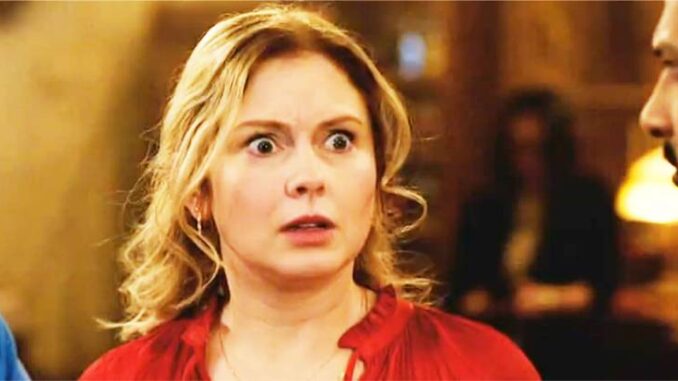
The Golden Cage: Why Ghosts Season 5 Keeps the Show Stuck in a Catch-22
The CBS sitcom Ghosts is a delightful spectral romp, a beacon of heartwarming humor and clever character work. Its premise – a young woman, Sam, inherits a crumbling estate populated by the vibrant, anachronistic spirits of its previous residents – is pure comedic gold. But as the show enters its fifth season, its very brilliance, its foundational pillars, have solidified into a narrative Catch-22: the elements that make Ghosts so utterly charming are precisely what prevent it from evolving significantly, trapping its characters, both living and dead, in a perpetual, delightful, yet ultimately stagnant loop.
At its core, a Catch-22 is a paradoxical situation where an individual needs something that can only be had by not needing it, or where two contradictory conditions make an escape impossible. For Ghosts, this manifests in three interconnected ways, each forming a side of a glittering, unbreakable prison.
1. The Immobile Afterlife: The Ghosts’ Perpetual Present
The most obvious and fundamental Catch-22 lies with the ghosts themselves. Their entire existence is predicated on being stuck at Woodstone Mansion. They cannot leave, they cannot truly die, and while they can achieve a temporary state of "walking through" the living world, their core reality is one of eternal, static presence. This immobility is the source of endless comedy: Isaac's Federalist grievances, Thorfinn's Viking anachronisms, Pete's scoutmaster naivety, Flower's free-love pronouncements – their humor stems directly from their inability to adapt, their unchanging personalities clashing with modern sensibilities.
Yet, this very stasis becomes a narrative quicksand. For a ghost to "move on" is, by definition, for them to leave the show. While Ghosts has handled such departures with grace (Alberta's killer moving on, for instance), the idea of a main character ghost finding peace and ascending is a literal death knell for the series. This creates a fascinating paradox: the show needs the ghosts to remain unresolved, un-evolved in their core predicament, for the ensemble to exist. Their character arcs, while present and often touching, are necessarily circular. They learn to co-exist, they reveal secrets, they grow closer as a "found family," but they can never truly move forward in a way that alters their fundamental state of being. Every season must, by its nature, largely reset them to their default, delightful, but narratively fixed positions.
2. Sam’s Exclusive Channel: The Burden of Unique Perception
Sam’s ability to see and hear the ghosts is the entire engine of the show. Without her, there’s no communication, no conflict between the living and the dead, no premise. Her unique perception makes her a mediator, a problem-solver, and the audience's primary window into this whimsical purgatory. The humor often derives from her exasperation, her attempts to translate spectral desires to Jay, or her struggles to live a normal life with a dozen invisible roommates.
However, this exclusivity also forms another powerful narrative handcuff. If Sam were to lose her ability, the show instantly collapses. Similarly, if her husband Jay – or any other living character – were to permanently gain the ability, the dynamic shifts so drastically that it would fundamentally alter the show’s comedic core. Jay’s endearing cluelessness, his bewildered reactions to Sam's "talking to herself," and his attempts to infer spectral activity are a wellspring of physical and situational comedy. If he could see them too, much of this charming friction would vanish. The show toys with temporary visions for Jay, offering tantalizing glimpses of a different world, but always pulls back, understanding that to fully integrate him into the spectral world would be to lose a crucial comedic foil. Sam must remain the sole bridge, forever tethered to her unique gift and its inherent isolation.
3. The B&B Blueprint: The Limits of the Homestead
The premise of Sam and Jay opening a bed and breakfast at Woodstone Mansion provides the perfect, contained setting for the ghost-human interactions. It brings new living characters (guests) into the mix, offering fresh perspectives and conflicts for the ghosts to observe and influence. It’s a brilliant device for episodic storytelling.
Yet, like the other elements, it’s also a form of narrative inertia. The B&B must exist for the show to function. What if Sam and Jay sold the mansion? What if they moved? Such a radical change would pull the ghosts from their haunt, fundamentally altering the show’s setting and premise. Even within the B&B framework, there's a delicate balance. Too much success might mean less time for ghost antics; too much failure might force them to abandon the project. The B&B serves as both an exciting stage and a confining set piece, ensuring that Sam and Jay remain physically and financially anchored to the spectral residents.
The Enduring Allure of Stagnation
By Season 5, these interlocking Catch-22s become more pronounced. While the writing remains sharp and the performances stellar, there's an undeniable feeling of an ouroboros, a snake eating its own tail. Character arcs for the ghosts often loop back to similar lessons, conflicts between Sam and Jay about the ghosts' presence resurface, and the core dynamic remains steadfastly – and necessarily – unchanged.
This isn't necessarily a condemnation. Ghosts thrives on comfort, on the joy of returning to familiar characters and their unchanging quirks. Its humor lies in the repetition, the predictable absurdity of its premise. But it does mean that the show, by its very design, has limited avenues for profound, lasting evolution. The golden cage of its own success, built from its brilliant initial concept, ensures that Ghosts will continue to be delightful, heartwarming, and perpetually, gloriously stuck. And perhaps, for a show about people literally stuck in their afterlife, that's the most fitting irony of all.
